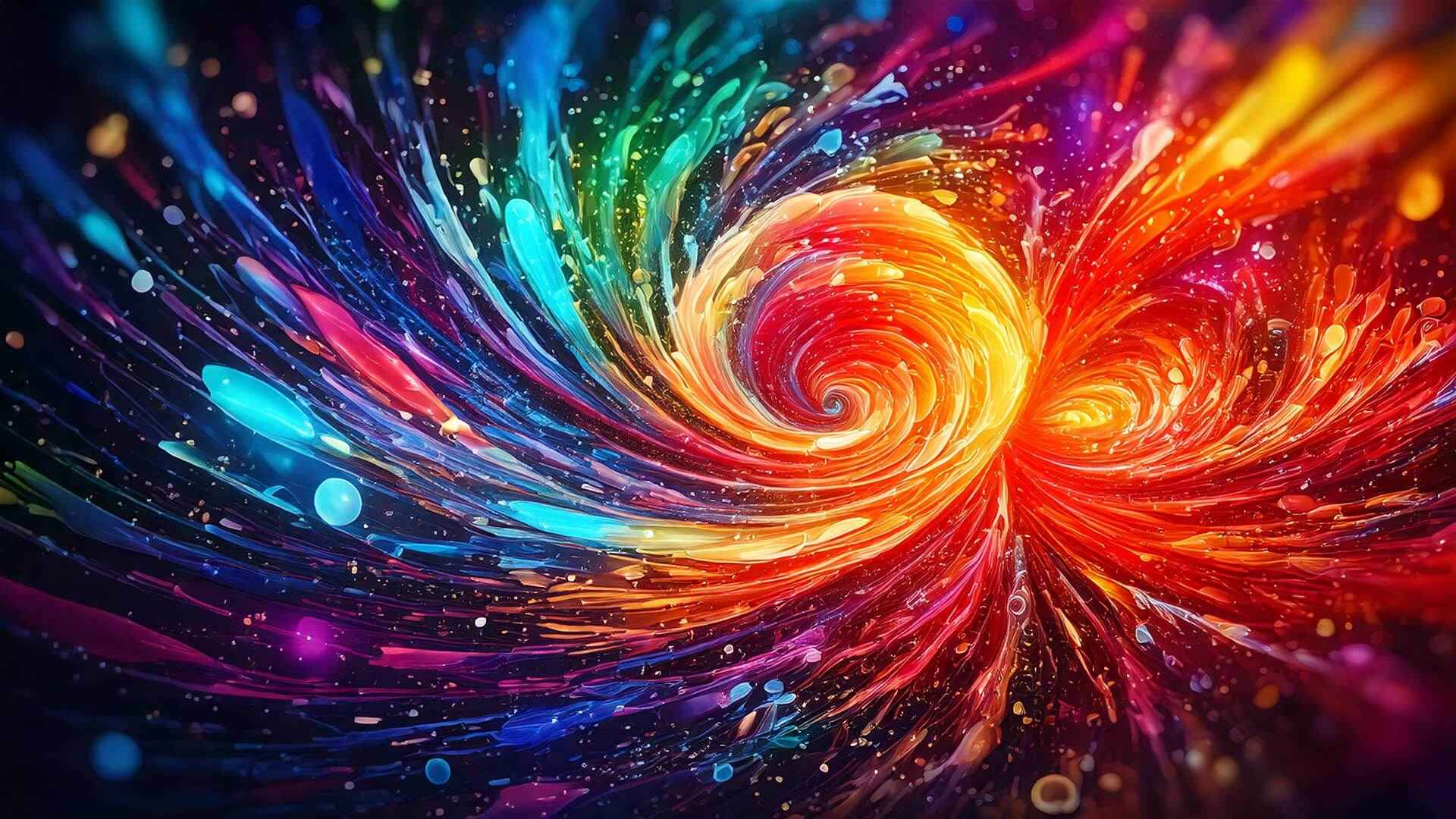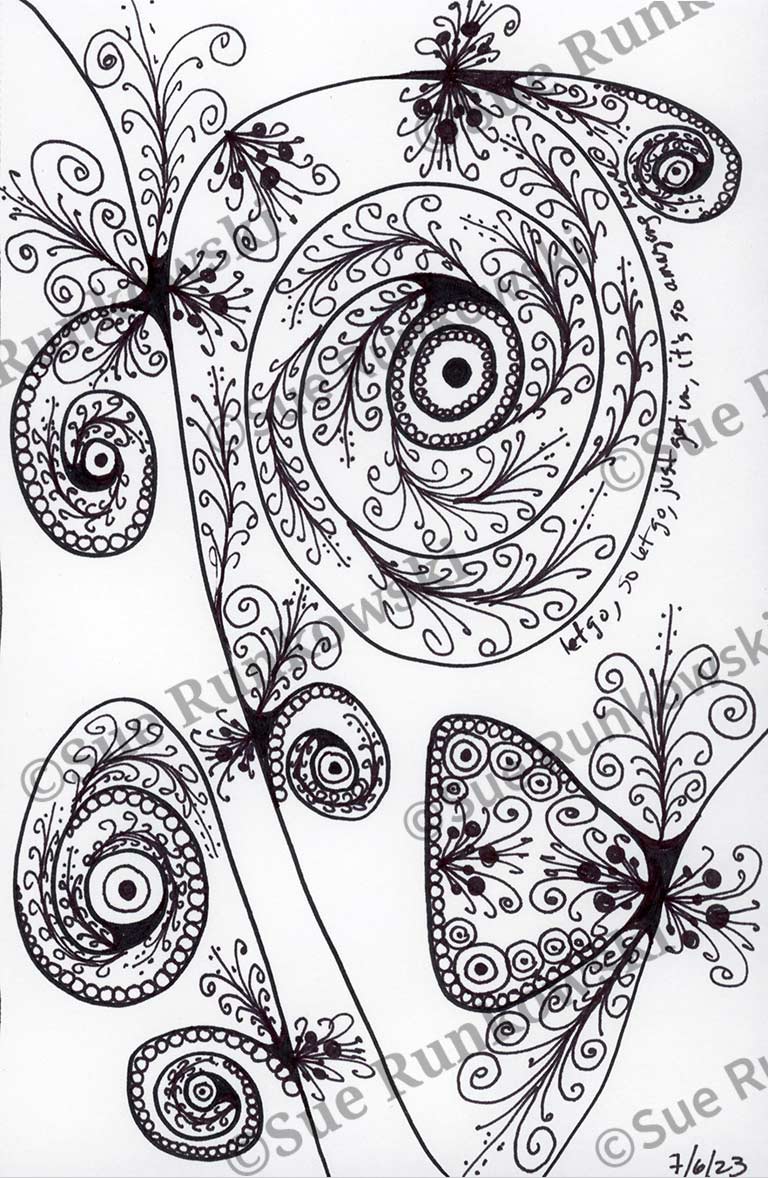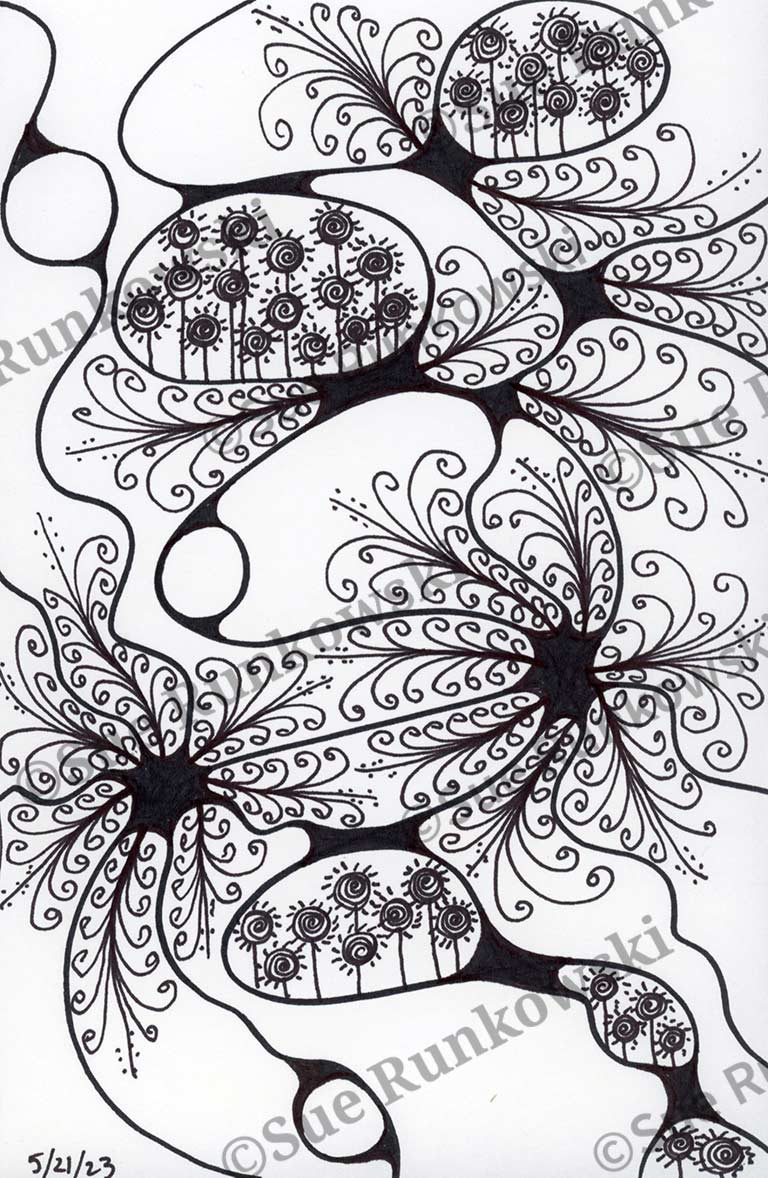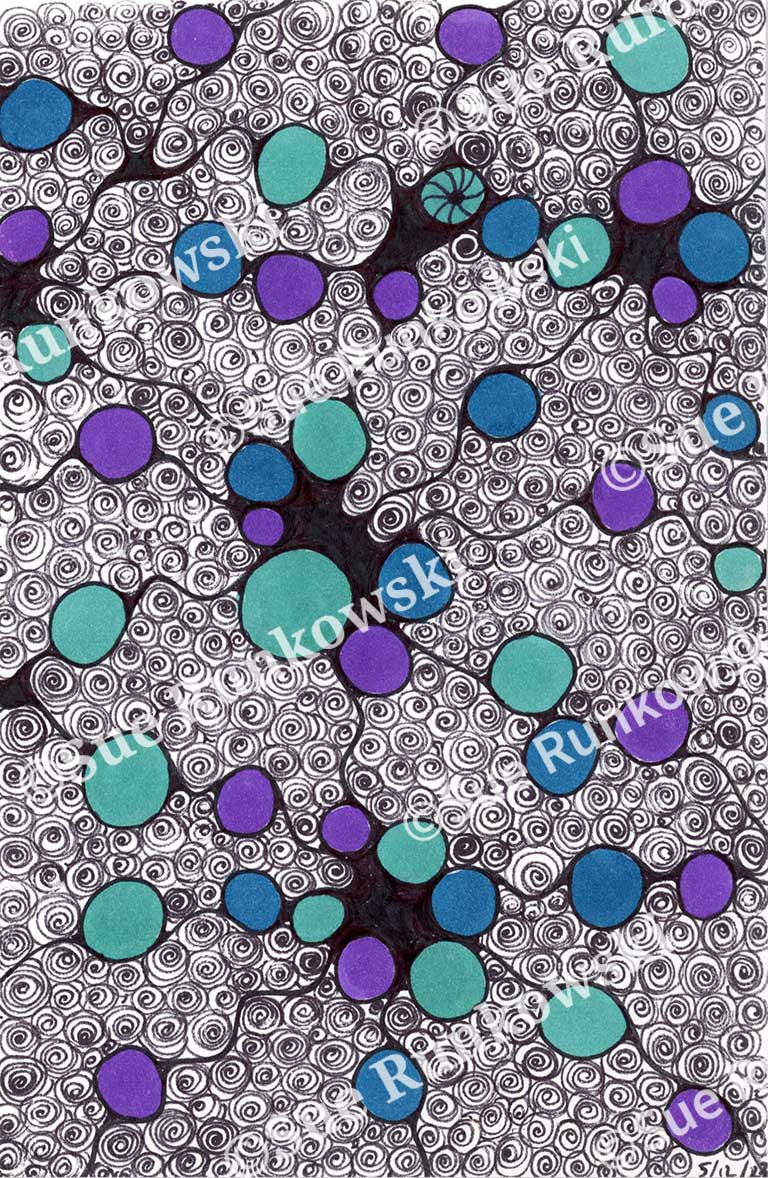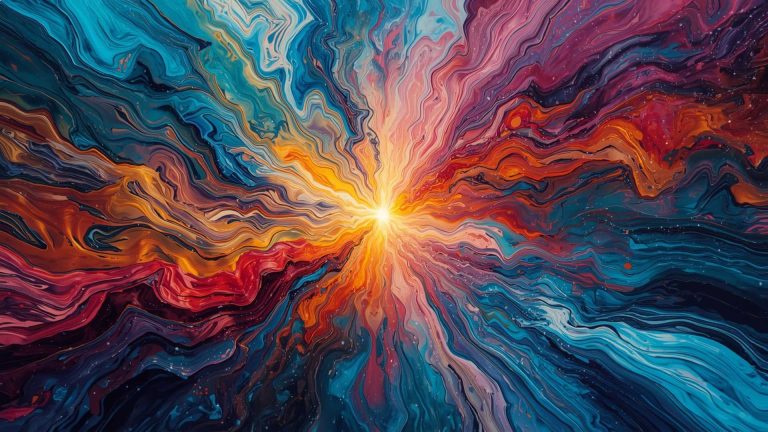A symbolic journey through nature, art, and culture
Read time 2 minutes
fter flipping through my sketchbooks, friends often ask, “Why do you draw so many spirals?” It’s a question I hear often, and truthfully, I’ve never given it much thought—until now. Spirals seem to flow from my hand naturally, almost as if they’re being drawn by something beyond me. But why this shape? Is there a hidden, subconscious reason behind my constant urge to create them? Intrigued by this mystery, I set out to uncover the deeper forces at play behind this compelling symbol.
Spirals are more than just a fascinating visual pattern—they’re a symbol that appears across nature, art, and culture. From the natural elegance of snail shells to the infinite vastness of galaxies, spirals represent both literal and metaphorical journeys. Their widespread presence across so many domains invites us to explore their deeper, symbolic meanings.
In nature, spirals aren’t just visually captivating—they also serve practical and beautiful purposes. Take the nautilus shell, for example: its spiral grows logarithmically, meaning each curve expands proportionally, allowing the creature to thrive without overcrowding its space. This natural design mirrors the cycle of life—constantly expanding while staying anchored at its core. Similarly, the Fibonacci sequence, a pattern in which each number is the sum of the two before it, appears throughout nature—in pinecones, sunflower heads, and even the arrangement of leaves. The resulting spiral is a perfect example of nature’s flawless order and beauty.Spirals carry rich meaning in many cultures and philosophies as well. In ancient civilizations, the spiral symbolized the eternal cycle of life, death, and rebirth. For the Celts, the spiral was a sacred representation of growth, the cosmos, and interconnectedness. In Hinduism and Buddhism, the spiral often signifies spiritual ascension, guiding the soul from the material world toward enlightenment. Its design embodies the idea of cyclical time, continuous evolution, and the eternal process of transformation.
In art and architecture, spirals act as powerful metaphors for change and self-discovery. The labyrinth at Chartres Cathedral in France, for example, symbolizes a journey of spiritual growth. Walking its spiral path mirrors the inward journey toward self-awareness and divine truth. Similarly, artists like M.C. Escher used spirals to explore themes of perception, reality, and infinity, highlighting how this shape can transcend physical boundaries.
On a psychological level, spirals represent personal growth and evolution. As the shape spirals inward or outward, it reflects the ongoing process of transformation and enlightenment. Whether seen in nature, culture, or art, the spiral is a timeless and multifaceted symbol, capturing the dynamic, ever-changing journey of life itself.
Spirals flow from my hand instinctively, as if guided by a deeper force. This powerful symbol effortlessly connects me to nature, embodying growth, transformation, and endless potential. Drawn to their fluidity, spirals become a canvas for self-expression and creative exploration, offering a dynamic journey into limitless creativity.
